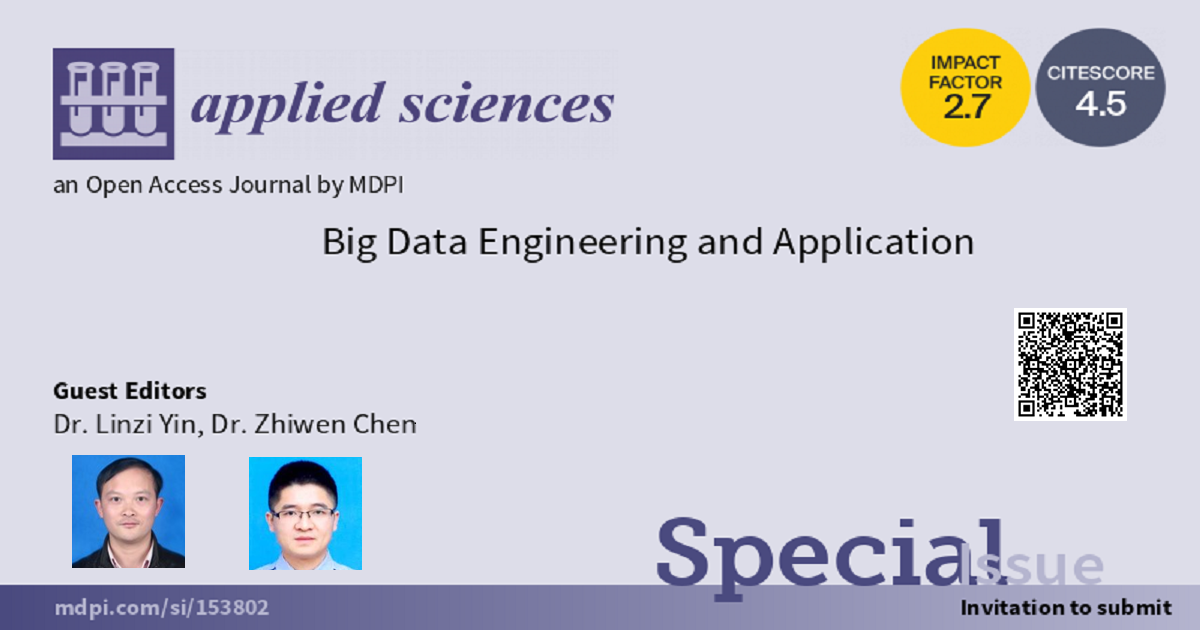Big Data Engineering and Application
A special issue of Applied Sciences (ISSN 2076-3417). This special issue belongs to the section "Computing and Artificial Intelligence".
Deadline for manuscript submissions: closed (29 February 2024) | Viewed by 4467

Special Issue Editors
Interests: big data, machine learning, data mining
Interests: machine learning; data mining and analytic; PHM and fault diagnosis
Special Issues, Collections and Topics in MDPI journals
Special Issue Information
Dear Colleagues,
We are inviting submissions to the Special Issue on Big Data Engineering and Application.
Big data is at the forefront of the current research and provides a complete and effective data and information analysis method for artificial intelligence and in many fields of intelligent decisions. In this Special Issue, we invite submissions exploring cutting-edge research and recent advances in the fields of Big Data Engineering and Application. Both theoretical and experimental studies are welcome, as well as comprehensive reviews and survey papers.
The main topics include computing models, algorithms, frameworks and related applications and so on, as well as optimization and application of machine learning theory in big data.
Dr. Linzi Yin
Dr. Zhiwen Chen
Guest Editors
Manuscript Submission Information
Manuscripts should be submitted online at www.mdpi.com by registering and logging in to this website. Once you are registered, click here to go to the submission form. Manuscripts can be submitted until the deadline. All submissions that pass pre-check are peer-reviewed. Accepted papers will be published continuously in the journal (as soon as accepted) and will be listed together on the special issue website. Research articles, review articles as well as short communications are invited. For planned papers, a title and short abstract (about 100 words) can be sent to the Editorial Office for announcement on this website.
Submitted manuscripts should not have been published previously, nor be under consideration for publication elsewhere (except conference proceedings papers). All manuscripts are thoroughly refereed through a single-blind peer-review process. A guide for authors and other relevant information for submission of manuscripts is available on the Instructions for Authors page. Applied Sciences is an international peer-reviewed open access semimonthly journal published by MDPI.
Please visit the Instructions for Authors page before submitting a manuscript. The Article Processing Charge (APC) for publication in this open access journal is 2400 CHF (Swiss Francs). Submitted papers should be well formatted and use good English. Authors may use MDPI's English editing service prior to publication or during author revisions.
Keywords
- big data and data mining
- big data and machine learning
- big data engineering and application
- big data-driven decision modeling
- high performance big data learning architecture, algorithm and system






